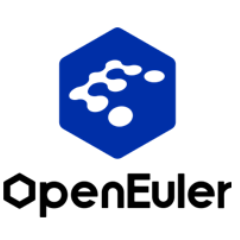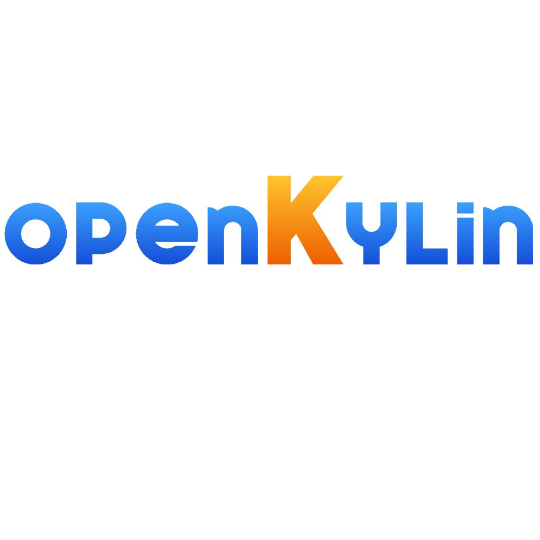DSPy.ts 核心API详解:构建声明式语言模型交互系统
2025-07-08 22:36:39作者:余洋婵Anita
项目概述
DSPy.ts 是一个基于 TypeScript 的声明式语言模型交互框架,它通过模块化设计让开发者能够高效地构建和管理语言模型工作流。该项目提供了从基础预测到复杂推理任务的全套工具链,特别适合需要将语言模型集成到生产环境中的开发者。
核心架构解析
模块系统设计
DSPy.ts 的模块系统是其核心创新点,采用声明式编程范式定义语言模型交互:
const module = defineModule<TInput, TOutput>({
name: '情感分析模块',
signature: {
inputs: [{ name: 'text', type: 'string', description: '待分析文本' }],
outputs: [{ name: 'sentiment', type: 'string', description: '情感极性' }]
},
promptTemplate: (input) => `分析以下文本情感: ${input.text}`,
strategy: 'Predict'
});
模块设计的关键要素包括:
- 类型安全:通过泛型确保输入输出类型一致性
- 自描述性:signature 字段明确定义接口规范
- 策略模式:支持多种推理策略(基础预测、思维链等)
语言模型集成层
框架抽象了底层模型实现,提供统一接口:
// ONNX运行时集成
const onnxModel = new ONNXModel({
modelPath: '/models/sentiment.onnx',
executionProvider: 'webgpu' // 利用GPU加速
});
// PyTorch.js集成
const torchModel = new TorchModel({
deviceType: 'webgl' // 浏览器端GPU推理
});
集成特点:
- 跨平台支持:同时支持浏览器和Node.js环境
- 硬件加速:自动选择最优执行后端(WASM/WebGL/WebGPU)
- 统一接口:不同后端保持相同API签名
工作流编排系统
管道(Pipeline)机制
const nlpPipeline = new Pipeline(
[textCleaner, sentimentAnalyzer, reportGenerator],
{
stopOnError: false, // 错误容忍
maxRetries: 3, // 自动重试
debug: true // 开发模式
}
);
管道特性:
- 错误恢复:内置重试和错误隔离机制
- 可观测性:详细记录每个步骤的执行指标
- 组合性:支持任意模块的自由组合
执行结果分析
管道返回结构化结果对象:
interface PipelineResult {
success: boolean; // 整体状态
finalOutput: any; // 最终输出
steps: StepResult[]; // 步骤详情
totalDuration: number; // 总耗时(ms)
error?: Error; // 错误对象
}
开发者可以通过这些指标进行:
- 性能瓶颈分析
- 错误根因定位
- 资源使用优化
高级推理模式
思维链(Chain-of-Thought)实现
const mathSolver = defineModule({
name: '数学解题器',
signature: {
inputs: [{ name: 'problem', type: 'string' }],
outputs: [
{ name: 'reasoning', type: 'string[]' },
{ name: 'answer', type: 'number' }
]
},
strategy: 'ChainOfThought'
});
实现特点:
- 自动生成中间推理步骤
- 支持多轮自我验证
- 可配置的反思机制
反应式代理(ReAct)模式
const researchAgent = defineModule({
name: '研究助手',
strategy: 'ReAct',
tools: [
webSearchTool,
calculatorTool,
dbQueryTool
]
});
核心能力:
- 动态工具选择
- 行动-观察循环
- 自主目标分解
错误处理最佳实践
框架提供分层错误处理机制:
try {
await pipeline.run(researchTask);
} catch (err) {
if (err instanceof PipelineError) {
console.error(`步骤${err.step}失败:`, err.cause);
// 实现回退逻辑
}
// 其他错误处理...
}
错误类型体系:
LMError: 模型调用相关错误ModuleError: 模块处理错误PipelineError: 管道执行错误
性能优化指南
-
模型配置
configureLM(new ONNXModel({ executionProvider: detectBestBackend() // 自动选择最优后端 })); -
管道调优
new Pipeline(modules, { maxRetries: 2, // 平衡可靠性与延迟 retryDelay: exponentialBackoff // 指数退避 }); -
缓存策略
const cachedModule = withCache( sentimentAnalyzer, new LRUCache(100) // 最近最少使用缓存 );
开发建议
-
测试策略
- 使用Mock LM进行单元测试
- 验证边界输入处理
- 监控生产环境指标
-
类型安全
interface MathInput { problem: string; context?: string; } const mathModule = defineModule<MathInput, MathOutput>(...); -
文档驱动
signature: { inputs: [{ name: 'query', type: 'string', description: '符合自然语言的问题表述' }] }
DSPy.ts 通过这套精心设计的API体系,使语言模型集成从临时脚本升级为可维护的工程化解决方案。其模块化架构特别适合需要长期迭代的AI应用场景,为开发者提供了从原型到生产的完整工具链。
登录后查看全文
热门项目推荐
 kernelopenEuler内核是openEuler操作系统的核心,既是系统性能与稳定性的基石,也是连接处理器、设备与服务的桥梁。C040
kernelopenEuler内核是openEuler操作系统的核心,既是系统性能与稳定性的基石,也是连接处理器、设备与服务的桥梁。C040 MiniMax-M2.1从多语言软件开发自动化到复杂多步骤办公流程执行,MiniMax-M2.1 助力开发者构建下一代自主应用——全程保持完全透明、可控且易于获取。Python00
MiniMax-M2.1从多语言软件开发自动化到复杂多步骤办公流程执行,MiniMax-M2.1 助力开发者构建下一代自主应用——全程保持完全透明、可控且易于获取。Python00 kylin-wayland-compositorkylin-wayland-compositor或kylin-wlcom(以下简称kywc)是一个基于wlroots编写的wayland合成器。 目前积极开发中,并作为默认显示服务器随openKylin系统发布。 该项目使用开源协议GPL-1.0-or-later,项目中来源于其他开源项目的文件或代码片段遵守原开源协议要求。C01
kylin-wayland-compositorkylin-wayland-compositor或kylin-wlcom(以下简称kywc)是一个基于wlroots编写的wayland合成器。 目前积极开发中,并作为默认显示服务器随openKylin系统发布。 该项目使用开源协议GPL-1.0-or-later,项目中来源于其他开源项目的文件或代码片段遵守原开源协议要求。C01 PaddleOCR-VLPaddleOCR-VL 是一款顶尖且资源高效的文档解析专用模型。其核心组件为 PaddleOCR-VL-0.9B,这是一款精简却功能强大的视觉语言模型(VLM)。该模型融合了 NaViT 风格的动态分辨率视觉编码器与 ERNIE-4.5-0.3B 语言模型,可实现精准的元素识别。Python00
PaddleOCR-VLPaddleOCR-VL 是一款顶尖且资源高效的文档解析专用模型。其核心组件为 PaddleOCR-VL-0.9B,这是一款精简却功能强大的视觉语言模型(VLM)。该模型融合了 NaViT 风格的动态分辨率视觉编码器与 ERNIE-4.5-0.3B 语言模型,可实现精准的元素识别。Python00 GLM-4.7GLM-4.7上线并开源。新版本面向Coding场景强化了编码能力、长程任务规划与工具协同,并在多项主流公开基准测试中取得开源模型中的领先表现。 目前,GLM-4.7已通过BigModel.cn提供API,并在z.ai全栈开发模式中上线Skills模块,支持多模态任务的统一规划与协作。Jinja00
GLM-4.7GLM-4.7上线并开源。新版本面向Coding场景强化了编码能力、长程任务规划与工具协同,并在多项主流公开基准测试中取得开源模型中的领先表现。 目前,GLM-4.7已通过BigModel.cn提供API,并在z.ai全栈开发模式中上线Skills模块,支持多模态任务的统一规划与协作。Jinja00 agent-studioopenJiuwen agent-studio提供零码、低码可视化开发和工作流编排,模型、知识库、插件等各资源管理能力TSX0120
agent-studioopenJiuwen agent-studio提供零码、低码可视化开发和工作流编排,模型、知识库、插件等各资源管理能力TSX0120 Spark-Formalizer-X1-7BSpark-Formalizer 是由科大讯飞团队开发的专用大型语言模型,专注于数学自动形式化任务。该模型擅长将自然语言数学问题转化为精确的 Lean4 形式化语句,在形式化语句生成方面达到了业界领先水平。Python00
Spark-Formalizer-X1-7BSpark-Formalizer 是由科大讯飞团队开发的专用大型语言模型,专注于数学自动形式化任务。该模型擅长将自然语言数学问题转化为精确的 Lean4 形式化语句,在形式化语句生成方面达到了业界领先水平。Python00
项目优选
收起
deepin linux kernel
C
26
10
OpenHarmony documentation | OpenHarmony开发者文档
Dockerfile
434
3.3 K
本项目是CANN提供的数学类基础计算算子库,实现网络在NPU上加速计算。
C++
694
367
Ascend Extension for PyTorch
Python
240
274
暂无简介
Dart
694
164
Nop Platform 2.0是基于可逆计算理论实现的采用面向语言编程范式的新一代低代码开发平台,包含基于全新原理从零开始研发的GraphQL引擎、ORM引擎、工作流引擎、报表引擎、规则引擎、批处理引引擎等完整设计。nop-entropy是它的后端部分,采用java语言实现,可选择集成Spring框架或者Quarkus框架。中小企业可以免费商用
Java
9
1
React Native鸿蒙化仓库
JavaScript
269
328
🔥LeetCode solutions in any programming language | 多种编程语言实现 LeetCode、《剑指 Offer(第 2 版)》、《程序员面试金典(第 6 版)》题解
Java
65
19
🎉 (RuoYi)官方仓库 基于SpringBoot,Spring Security,JWT,Vue3 & Vite、Element Plus 的前后端分离权限管理系统
Vue
1.22 K
673
仓颉编译器源码及 cjdb 调试工具。
C++
138
869